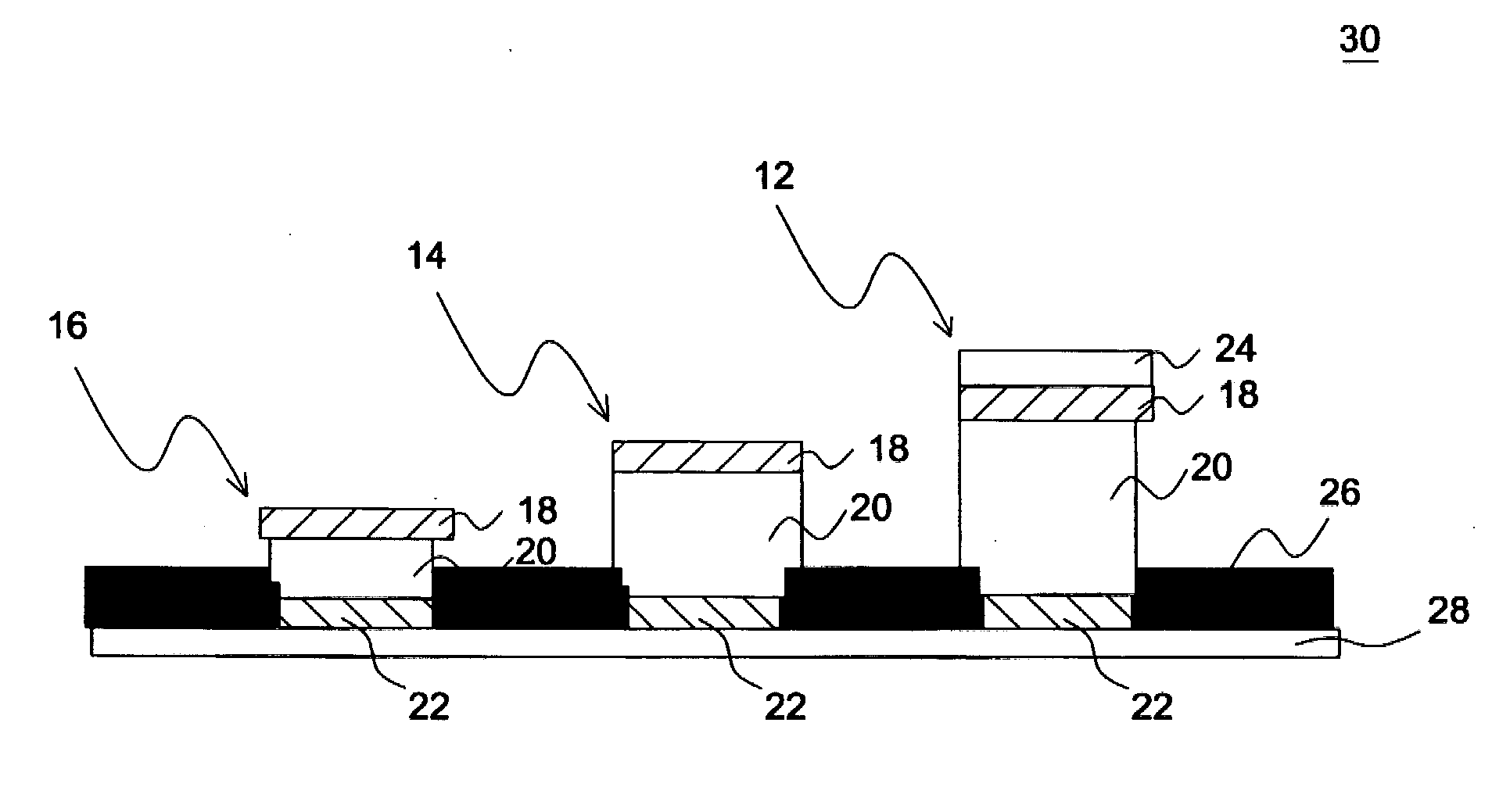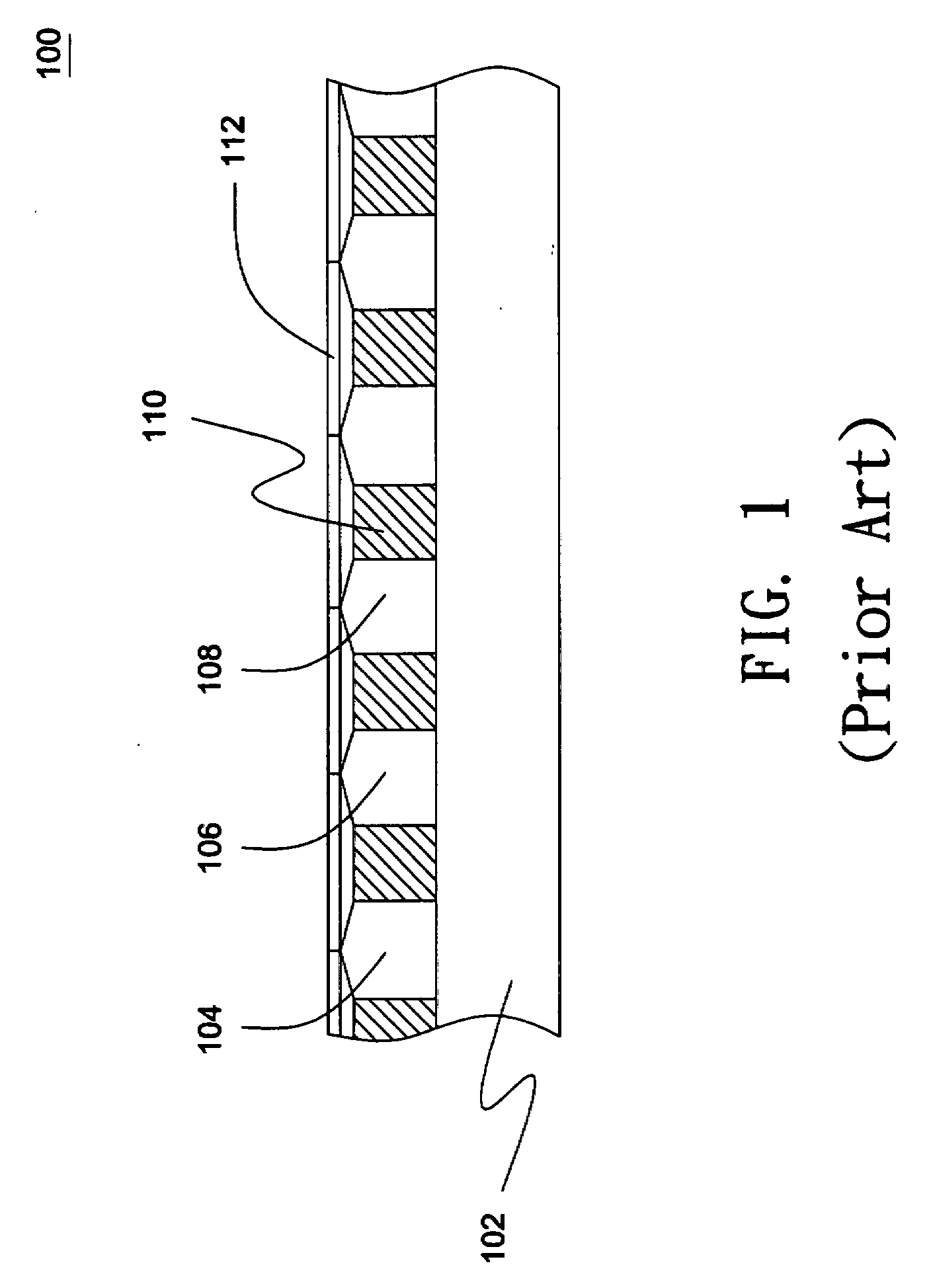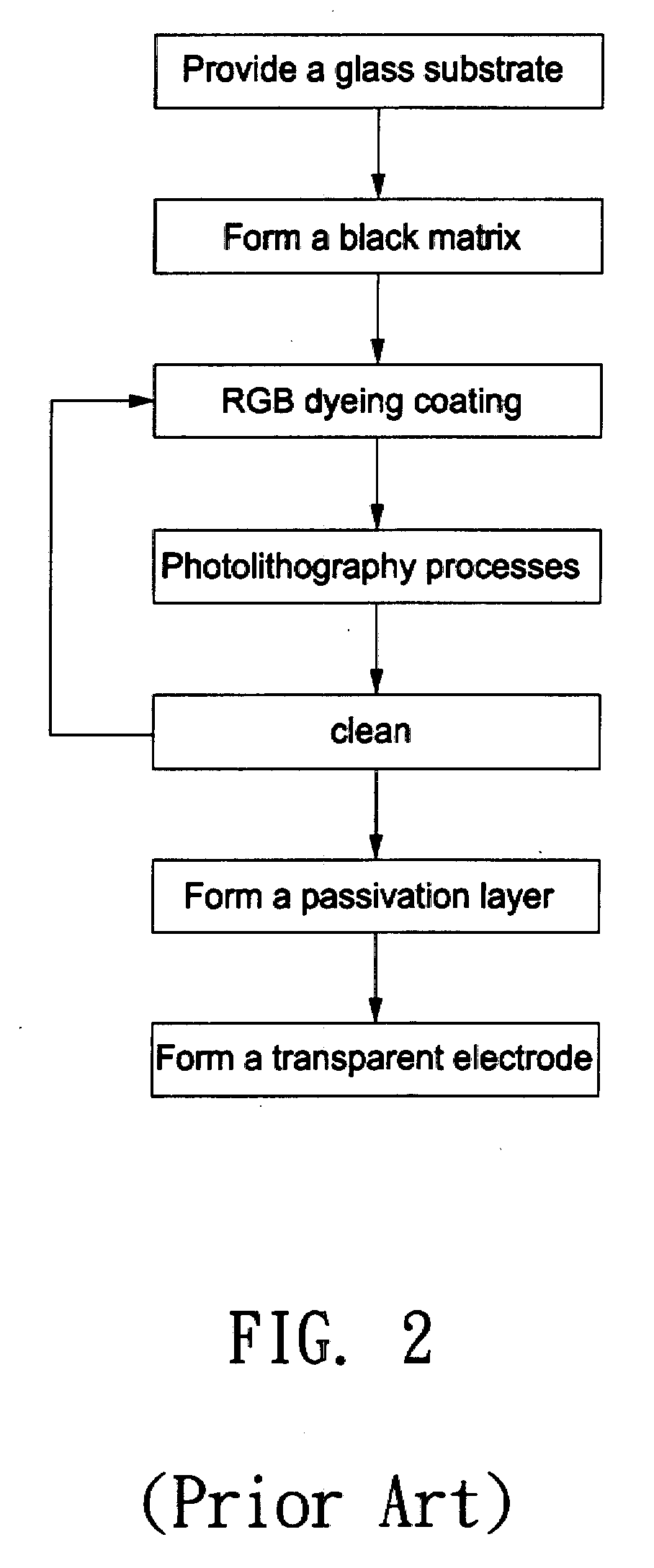Color filter substrate
a color filter and substrate technology, applied in the field of color filter substrates, can solve the problems of high percentage of the overall fabrication cost of a color lcd, high cost of color filter, and low utilization efficiency of raw materials, and achieve the effect of improving the color saturation of a color liquid crystal display
- Summary
- Abstract
- Description
- Claims
- Application Information
AI Technical Summary
Benefits of technology
Problems solved by technology
Method used
Image
Examples
first embodiment
[0022]
TABLE 1LaminateMaterialThicknessReflective layersAg40 nmSpacer layer corresponding to red pixel portionSiO2190 nm Spacer layer corresponding to green pixel portionSiO2139 nm Spacer layer corresponding to blue pixel portionSiO292 nmInterference layerSi42 nm
[0023]In this embodiment, the first and second reflective layers 18 and 22 are both made of silver (Ag) and have a thickness of 40 nm. The spacer layer 20 is made of silicon dioxide (SiO2) having a low refractive index.
[0024]FIGS. 4A-4D show the transmittance of a particular color versus the wavelength of light according to the selection listed in table 1. Referring to FIGS. 4A and 4B, it can be seen the blue pixel portion 16 and the green pixel portion 14 may output pure blue light and green light, respectively, under the selection of the spacer layer thickness listed in table 1. However, referring to FIG. 4C, as the thickness of the spacer layer 20 corresponding to the red pixel portion 12 is selected as 190 nm, an undesire...
second embodiment
[0026]
TABLE 2LaminateMaterialThicknessReflective layersAg40 nmSpacer layer corresponding to red pixel portionTiO299 nmSpacer layer corresponding to green pixel portionTiO268 nmSpacer layer corresponding to blue pixel portionTiO240 nmInterference layerSi42 nm
[0027]In this embodiment, the first and second reflective layers 18 and 22 are both made of silver (Ag) and have a thickness of 40 nm. The spacer layer 20 is made of titanium dioxide (TiO2) having a high refractive index.
[0028]FIGS. 6A-6D show the transmittance of a particular color versus the wavelength of light according to the selection listed in table 2. Referring to FIGS. 6A and 6B, it can be seen the blue pixel portion 16 and the green pixel portion 14 may output pure blue light and green light, respectively, under the selection of the spacer layer thickness listed in table 2. However, referring to FIG. 6C, as the thickness of the spacer layer 20 corresponding to the red pixel portion 12 is selected as 99 nm, an undesired p...
third embodiment
[0031]
TABLE 3LaminateMaterialThicknessReflective layersAg40nmSpacer layer corresponding to red pixel portionSiO2180.5nmSpacer layer corresponding to green pixel portionSiO2139nmSpacer layer corresponding to blue pixel portionSiO292nm
[0032]In this embodiment, the first and second reflective layers 18 and 22 are both made of silver (Ag) and have a thickness of 40 nm. The spacer layer 20 is made of silicon dioxide (SiO2) having a low refractive index. FIG. 7 shows the spectral characteristics of the output red light from the red pixel portion 12 when the thickness of the spacer layer 20 corresponding to the red pixel portion 12 is selected as 180.5 nm. As shown in FIG. 7, though an undesired peak also emerges at a wavelength of about 380 nm-400 nm of the output spectrum, it is comparatively small when compared with the undesired peaks shown in the first and second embodiments. From this embodiment, the chromaticity coordinate in a CIE 1931 chromaticity diagram (X,Y)=(0.529, 0.264), and...
PUM
 Login to View More
Login to View More Abstract
Description
Claims
Application Information
 Login to View More
Login to View More - R&D Engineer
- R&D Manager
- IP Professional
- Industry Leading Data Capabilities
- Powerful AI technology
- Patent DNA Extraction
Browse by: Latest US Patents, China's latest patents, Technical Efficacy Thesaurus, Application Domain, Technology Topic, Popular Technical Reports.
© 2024 PatSnap. All rights reserved.Legal|Privacy policy|Modern Slavery Act Transparency Statement|Sitemap|About US| Contact US: help@patsnap.com










